Cardiac arrest affects over 250,000 people annually. In ideal conditions, 60% of patients survive. The key to managing cardiac arrest is the speed of defibrillating the heart tissue. In cases of out-of-hospital cardiac arrest, immediate contact with emergency services is critical, followed by cardiopulmonary resuscitation (CPR) and, if available, the use of an Automated External Defibrillator (AED) before an ambulance arrives.
What is the ZOLL AED Plus?
When the heart experiences an arrhythmia or disruption in its electrical signals, ventricular fibrillation occurs. Defibrillators are designed to address this condition and are divided into external and implantable types. The Automated External Defibrillator (AED) is a portable external device that monitors the heart’s rhythm and delivers an electric shock when an arrhythmia or irregular heart rhythm is detected, restoring normal heart rhythm.
AEDs are used to treat sudden cardiac arrest (SCA), a condition where the heart suddenly and unpredictably stops functioning, halting blood flow to the brain and other organs. Without immediate intervention within the first few minutes, SCA typically results in death. Each minute that passes reduces the chance of recovery by 23%. After 3–5 minutes without treatment, irreversible brain damage may occur. An AED, if available, can be a lifesaver in such situations. AEDs can be placed in high-traffic areas such as subways, airports, shopping centers, schools, universities, restaurants, and sports facilities, where the risk of cardiac arrest is higher, for use by the public or trained personnel.
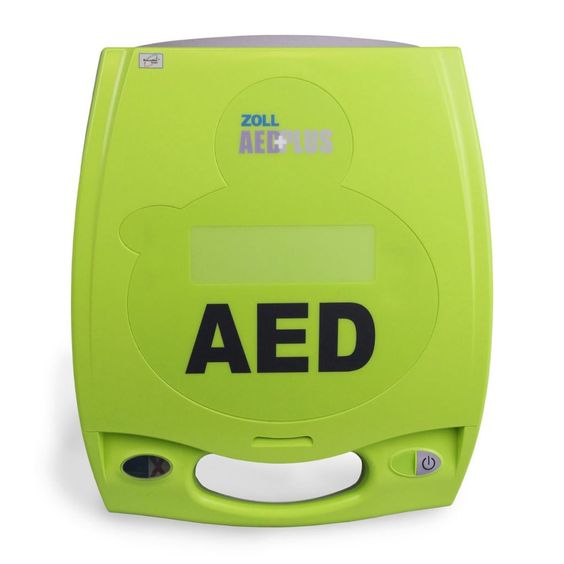
ZOLL AED Plus Features
AEDs are lightweight, battery-operated devices equipped with sensor-equipped pads called electrodes. When activated, the device provides step-by-step instructions for electrode placement and automatically assesses the patient’s condition. After attaching the electrodes, contact with the patient must be avoided to prevent errors in the device’s calculations. The AED analyzes the heart rhythm and provides audio instructions to the rescuer to deliver a shock at the appropriate moment if necessary. Some AED models have memory to record the patient’s ECG with timestamps, and certain devices can record audio to document the rescuer’s actions.
Early AEDs were monophasic, delivering high-energy shocks (360–400 joules), which could cause cardiac issues and severe second- or third-degree burns. Since 2003, AED designs have shifted to biphasic technology, delivering two consecutive lower-energy shocks (120–200 joules) with opposite polarities, reducing potential harm. AEDs are completely safe and reliable, with no reported cases of inappropriate shock delivery.
Types of Arrhythmias Treated by ZOLL AED Plus
The ZOLL AED Plus is limited to treating two types of arrhythmias:
- Ventricular Tachycardia (VT): An excessively fast heart rate that prevents adequate blood flow to organs, potentially leading to ventricular fibrillation.
- Ventricular Fibrillation (VF): Irregular electrical activity in the heart, preventing the ventricles from pumping blood effectively.
AEDs are designed for use by non-medical individuals, making them accessible in emergencies.

Using the ZOLL AED Plus for Resuscitation
- Assessment for AED Use
- Ensure the patient and rescuer are in a safe environment, free from water or flammable materials.
- Check the patient’s consciousness by calling their name.
- If unresponsive, immediately contact emergency services.
- Assess CABS:
- C (Chest): If the patient is not breathing normally, place hands in the center of the chest between the nipples and perform compressions at a rate of 100 per minute, pressing down 2 inches each time.
- A (Airway): Tilt the patient’s head back to open the airway.
- B (Breathing): Deliver two breaths into the patient’s lungs, ensuring the chest rises (within 10 seconds).
- Using the ZOLL AED Plus
- Obtain an AED. In some countries, AEDs are mounted on walls in public places.
- If an AED is unavailable, continue CPR.
- Turn on the AED by pressing a button or pulling a handle, depending on the model.
- Follow the AED’s audio instructions.
- Remove clothing from the patient’s chest, abdomen, and arms.
- Peel off the electrode pad covers and place them in the correct positions (accuracy in placement is more important than speed).
- The AED typically begins analyzing the heart rhythm immediately; if not, press the analyze button. Do not touch the patient during defibrillation.
- If the AED indicates a shock is needed, press the shock button, ensuring no one is touching the patient or that the patient is in contact with metal or excessive water (normal sweat is acceptable). Avoid placing pads directly over a pacemaker.
- Modern AEDs deliver a single high-intensity shock, followed by instructions to perform CPR for 2 minutes.
Some pulseless cardiac arrests are not treatable with an AED. If no shock is advised, check for a pulse; if absent, continue CPR.
- CPR
- If no breathing or pulse is detected, begin chest compressions.
- If a pulse is present but the patient is not breathing, provide rescue breaths only (every 5 seconds).
- If breathing resumes, place the patient in the recovery position.
- For patients requiring both compressions and breaths, deliver two 2-second breaths (while pinching the nose), then locate the upper chest, move two fingers down, and begin compressions.
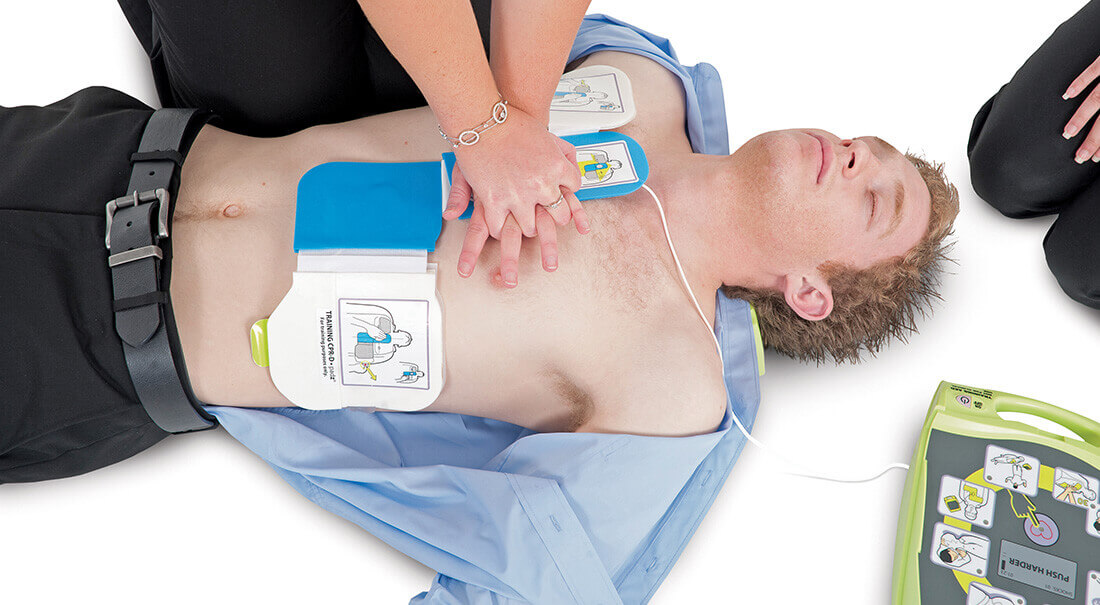
ZOLL AED Plus Specifics
The ZOLL AED Plus is equipped with Real CPR Help technology, which assists rescuers in delivering high-quality CPR with integrated audio and visual feedback. It is built to withstand various environmental conditions (extreme temperatures, altitude, vibration, and shock) and features automatic self-testing. When a shockable rhythm is detected, the device delivers a single shock. Other features include:
- Easy-to-install CPR-D-padz electrodes
- Long-lasting lithium batteries (5-year lifespan)
- Durable and user-friendly design
- Chest compression depth indicator
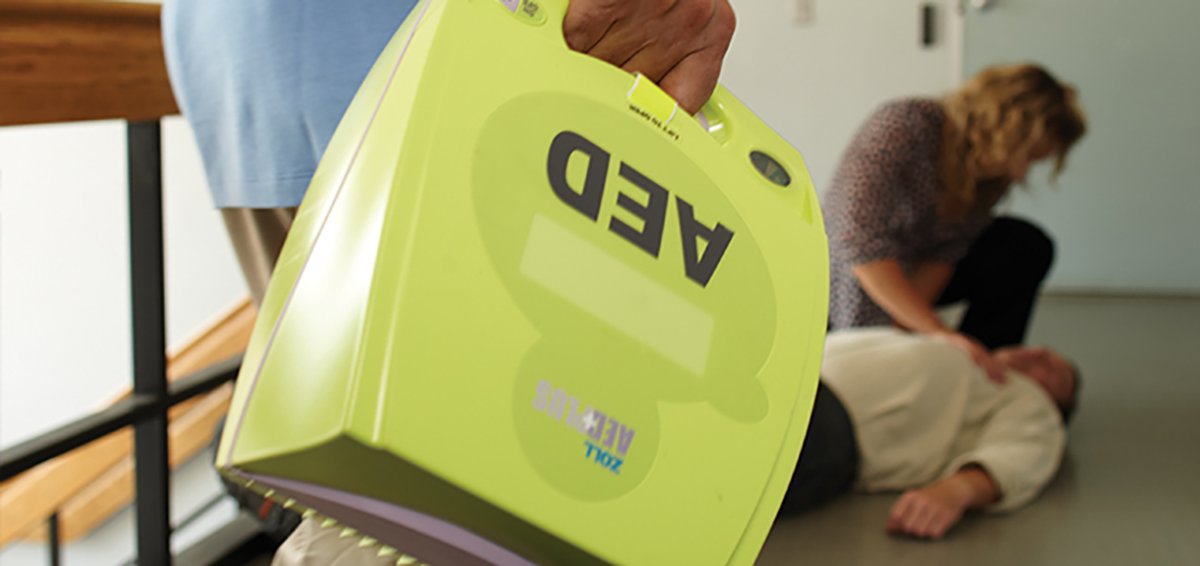
Benefits of the ZOLL AED Plus
- Portable electronic device
- Automatically detects ventricular fibrillation (VF) and pulseless ventricular tachycardia (VT)
- Treats arrhythmias with electric current
- Equipped with Real CPR Help technology
- Sensors in the electrode pads display chest compression depth, guiding the rescuer to meet recommended depth and rate via real-time ECG feedback
- The first AED designed for use by non-medical individuals with simple audio and visual instructions
- Used in basic life support (BLS) and first aid training
- The device cover doubles as an airway support tool
- Backlit display shows text synchronized with audio prompts, enabling faster and more effective CPR
- Provides real-time CPR guidance for optimal performance
- Features long-lasting (5-year) replaceable batteries
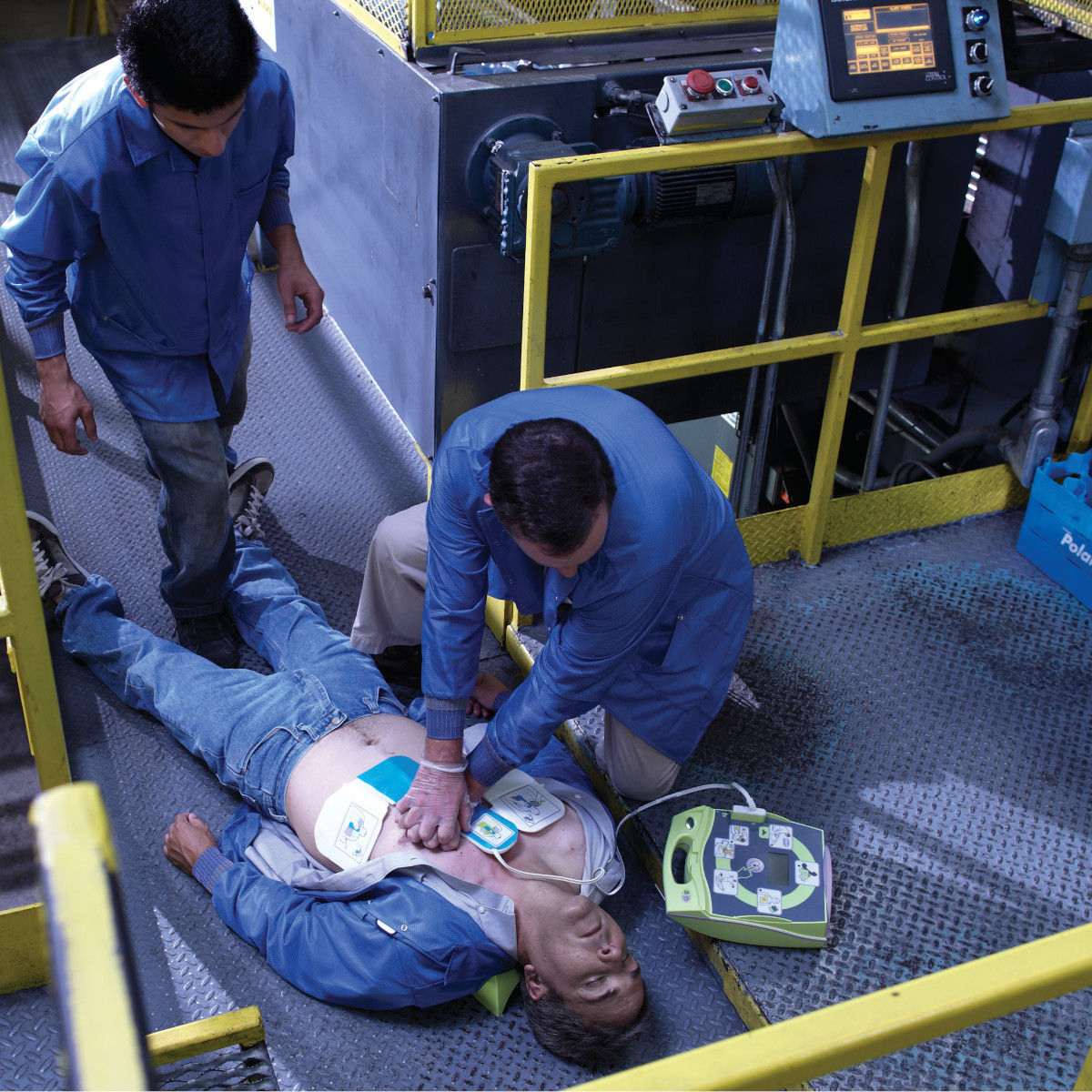
Price and Purchase of Anesthesia Products
The ZOLL Smart Automatic Digital Defibrillator, one of the most critical anesthesia products, is available through Anehouma. Leveraging cutting-edge digital technology and advanced sensors, it offers unmatched safety and precision in cardiac resuscitation. By accurately analyzing heart rhythm and automatically delivering appropriate shocks, it significantly reduces risks from delays or errors during resuscitation. This makes it an ideal choice for emergency departments, operating rooms, and clinics, ensuring successful resuscitation and improved patient survival rates.


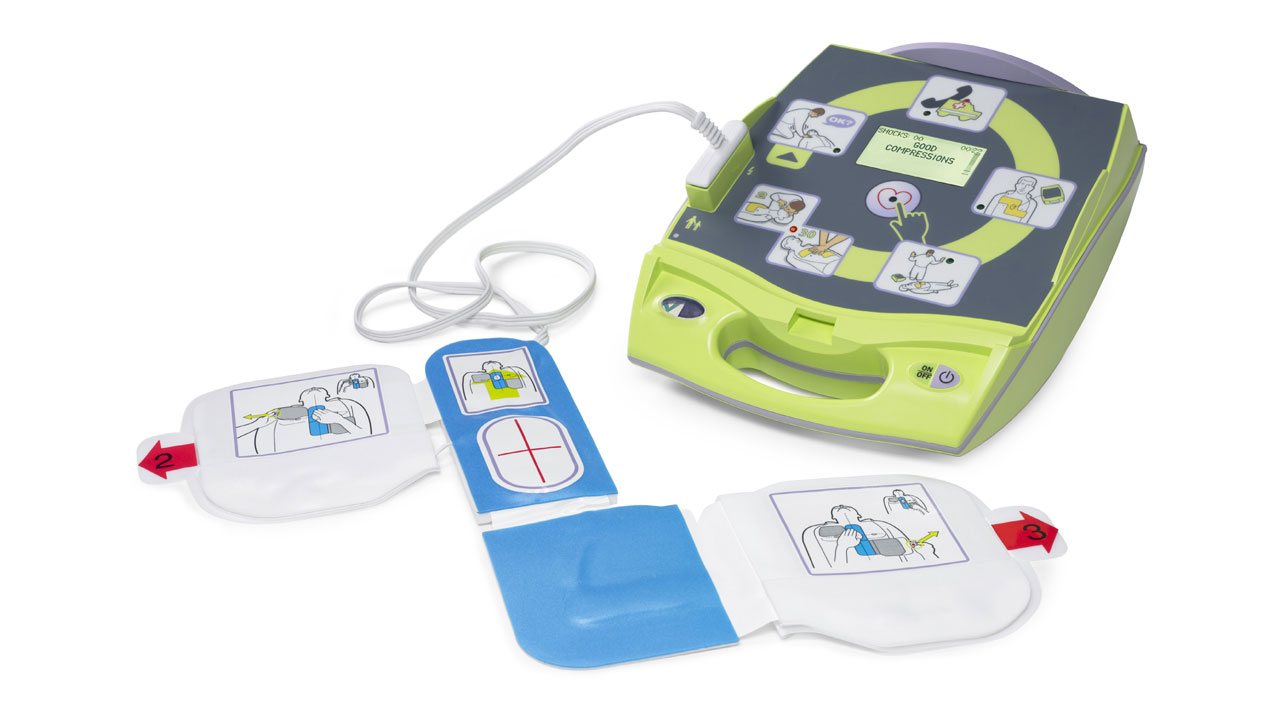

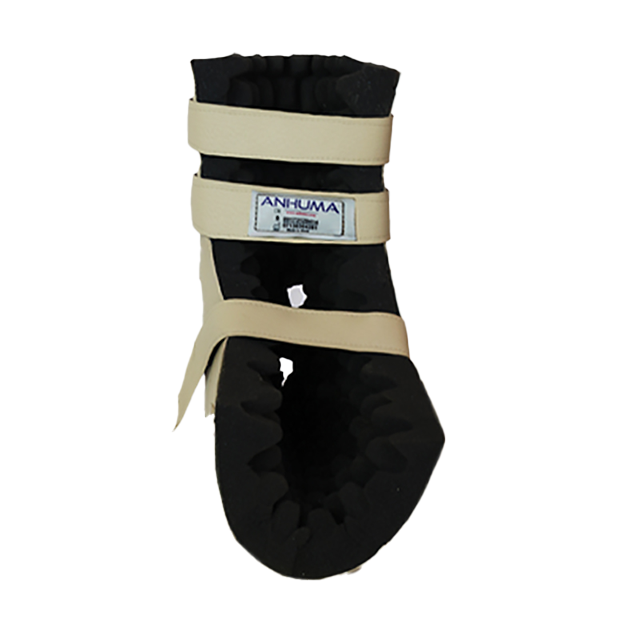
Reviews
There are no reviews yet.